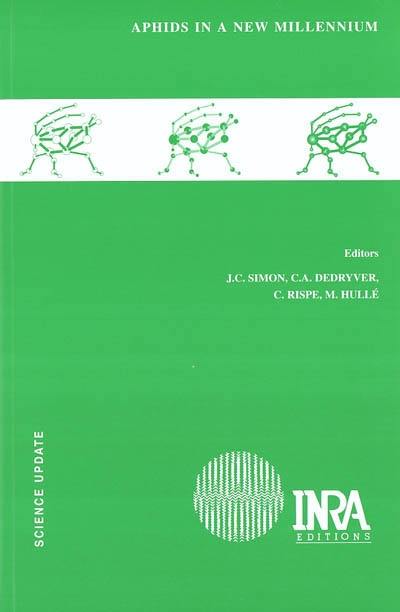
Fiche technique
Format : Broché
Nb de pages : 549 pages
Poids : 868 g
Dimensions : 16cm X 24cm
EAN : 9782738011138
Aphids in a new millennium
Quatrième de couverture
APHIDS IN A NEW MILLENNIUM
At the beginning of the 21st Century, aphids are receiving an increasing attention in at least three main directions. First, aphids are major crop pests in most regions of the world, and a large effort is still required in population dynamics, natural enemies and plant resistance studies for the development of more efficient and environmentally friendly methods to control their populations. Second, because of their high sensitivity to environmental modifications, their biodiversity and species composition would certainly be drastically affected by global change and there is an increasing need in systematic and faunistic studies to use aphid communities as indicators of anthropic effects. Lastly, because of their original biological features (e.g. cyclical parthenogenesis, polyphenism, phloem-feeding), they are ideal models for studying the molecular and cellular bases of important functions like reproduction, dispersion, symbiosis and virus vection, as well as their ecological and evolutionary significance.
All these research topics are covered by the scientific community of aphidologists, who organises international symposia on aphids every four years since 1981.
Aphids in a New Millennium contains the proceedings of the Sixth International Symposium on Aphids, held in September 2001 at Rennes, France, and organised by the aphidologists of INRA and of the École Nationale Supérieure Agronomique de Rennes (ENSAR). This book covers most aspects of aphid researches world-wide and is organised in five sections : (1) Biology and Ecology, (2) Taxonomy, Systematics and Faunistics, (3) Genetics, Population Biology and Evolutionary Ecology, (4) Population Dynamics, Biological Control and Integrated Pest Management, and (5) Aphid-plant Relationships. The number, diversity and quality of papers selected for this book reflect the dynamism of the world community of aphid-working scientists.





